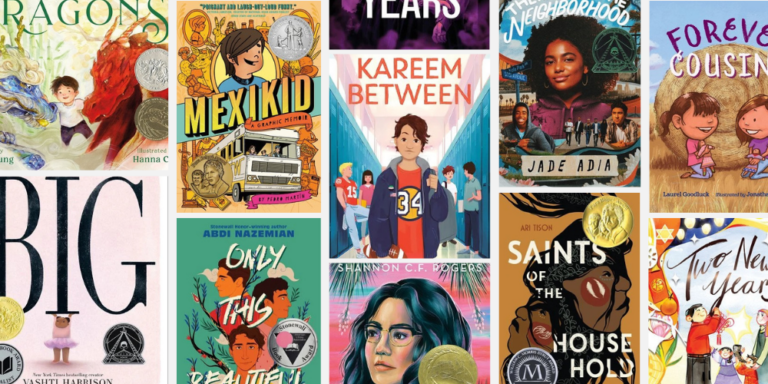Bringing Diverse Perspectives Into Your Teaching
On a scale of 1-10, how culturally responsive are you? Maybe you’re just getting started bringing diverse perspectives into your teaching, or maybe you’re well versed in culturally responsive teaching (CRT) practices and are working to support others in this work. No matter your place on the journey to responsiveness, there’s no doubt that there’s always room for growth.
Increasingly, the young people showing up in our classrooms come from a wide variety of lived experiences, linguistic backgrounds, and cultural ways of being. In fact, there are now more children of color than white children in America’s public schools, according to the Pew Research Center. Many educators have begun the work to embrace and celebrate diversity, make individual connections with students and families, evaluate curriculum and materials for relevance and bias, and some have even joined committees to analyze school policies and practices. If this is you, bravo! Becoming a more culturally responsive educator requires not only a change in mindset, but also the acquisition of new skills, and most importantly the desire to continue learning.
Wherever you find yourself on the journey to responsiveness, growth is key! Take a look at the list of 7 essential actions to becoming a more culturally responsive educator outlined below and make a commitment to “get curious!” That means evaluating what you know, what you don’t know, and seeking out greater understanding so that you can better serve all the students that walk through your door.
1. Commit to learning more! Watch videos, read books, go to an event, take a course.
What more can you learn? Who can you learn with and from? Take a moment to explore some of my favorite sources for continued learning about diverse cultural perspectives:
- Website: Facing History and Ourselves
- Website: Teaching Tolerance
- Book: A Young People’s History of the United States: Columbus to the War on Terror
- Website: GLSEN (Gay, Lesbian and Straight Education Network)
- Website: We Need Diverse Books
- Video: TED Talk, Chimamanda Ngozi Adichie
- Video: RACE– The Power of an Illusion: How the Racial Wealth Gap Was Created
- Book: Blindspot: Hidden Biases of Good People
- Learners Edge Course: Mindsets and Skillsets for a Culturally Responsive Classroom
2. Self-reflect. Grab a journal and reflect on your experiences with culture and difference:
- When did you first become aware of your identity (race, ethnicity, nationality, gender, orientation, religion, socioeconomic status, etc)?
- When did the identity of others become apparent to you?
- How have you and others been perceived by the world? Both accurately and inaccurately?
- What types of privilege or oppression have you experienced based on your identity?
- How can you use your experiences and new insights in your work with diverse students?
3. Evaluate how your organization reinforces ableism. All students, regardless of their ability, should feel welcome, represented and empowered in your school.
- Visit the Disability History Museum website which offers virtual exhibits, a searchable document collection and teacher lesson plans.
- Teach students to challenge ableist language with this GLSEN Lesson Plan.
4. Eliminate gendered language and classroom routines. Practices that call out or separate students into binary groups, like lining students up in boys/girls lines, can leave some students feeling excluded. Instead, work to eliminate gendered language and practices, and replace them with gender neutral approaches. Read this guide on Using Gender Neutral Language in Your Classroom to get some helpful tips.
5. Add diversity to the curriculum and in the physical environment. A great way to reevaluate your learning space is to take a tour with new eyes. Walk through the hallways and into your classroom with a diverse student lens. What do you notice? Consider the following questions:
- Are diverse student identities represented in the physical environment of your school and classroom?
- Does the library offer texts that all students can relate to?
- Whose voices and histories are centered in the grade level curriculum?
- Are diverse perspectives honored when important curricular decisions are made?
6. Learn about our nation’s history of inequality in the educational system and what you can do to undo it.
- Read, Three Important Benchmarks in the History of Educational Equity and Equality in the U.S. and 5 Ways Teachers Can Challenge Inequality in the Classroom.
- Do you have control or the ability to add a topic to a staff meeting? Try starting a conversation about how inequality shows up in your building and look for ways to undo inequitable school policies and practices.
7. Determine your values, strengths, and areas of growth. Once you’ve spent some time reflecting and gaining an initial understanding of diverse cultural perspectives, it’s time to set some goals! Continuous progress won’t happen without intention. Jot some goals down in that journal of yours and check back in a few weeks. Think about:
- What are your values as an educator? How are these values visible in your daily actions?
- How do you work to reach and teach all students?
- In what ways do you plan to seek out awareness and understanding of diverse lived experiences? How can you validate and affirm the experienced of your students?
- What changes do you intend to make to your curriculum, materials and physical environment? How can you advocate for changes outside of your control?







